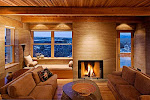My friend Merg Ross, an experienced and talented AP himself, asked me this question recently in a forum:
Kirk, do you miss the days when a 90mm on a Calumet Wide was sufficient, or do you feel digital is giving your clients a better product? I think I know the answer, like all of us, former and present in your field, we strive to please the client and deliver accordingly. I have said this before, as a former commercial photographer I am relieved that I retired at about the time digital made an entrance. What little I comprehend about digital, I enjoy. For now, I will continue with what I understand best, silver.To which I replied:
To me, as an object of sheer beauty, there is nothing like a glowing 4x5 transparency on a light table. It is far more satisfying and moving than a digital file on a computer screen. That is why I continue to shoot 4x5 film for my personal work. But film for a commercial work flow I do not miss. Digital is far more efficient and delivers a product that is exactly what my architecture and magazine clients currently need for their work flow. There was a time when I was the only architectural photographer still shooting film in my market. I was the old school guy and film was my badge of honor. I was the film martyr. Big deal. I wasn't giving my clients what they needed or I was spending half of my week scanning (very very very boring). But its a mute point here now. I couldn't go back to shooting film for commercial clients even if I wanted to. There are no film labs left in my city.I see the advantages as:
1) I am more productive. I can do more quality images in a day largely because digital is more forgiving in mixed light situations without filtering or changing films (from daylight to tungsten say). Also, because we are working at larger apertures to get adequate depth of field, we need less fill lighting a definite time saver. Additionally, more productive means more images per day, a fact my clients love, which translates to more computer time which means higher fees.
2) Since all my magazine and designer clients only want files now, digital offers a smoother, quicker work flow that can all be done in house (compared to the additional steps of having film processed, then scanned which I did for about two years prior to switching).
3) On the financial side, fees are higher and cash flow is better because we no longer have to pay for processing and our "digital capture processing fees" cover all the computer time.
4) Lighter weight camera and lighting equipment translates to preserving more energy through long shooting days, which for me translates to clearer thinking, better problem solving, better humour and simply more creativity. I haven't had so much fun doing commercial work in 30 years. This is especially important given the fact that I am rapidly approaching my 60th birthday!
5) Being able to pull up an image in progress on the computer is simply cost effective and superior. Polaroids approximated what my film would look like. With digital I can look at the file on my laptop exactly how it will be delivered.
One of the great advantages to digital is the ability to explore uncertain light with no penalties like wasting film. When traveling on extended shoots, even with resources like quality overnight film shippers, one had to always be aware of film and Polaroid supplies and loaded holders and shoot accordingly. Sometimes at the end of a long day with film running short, we would tend to get conservative with film to make sure we got the scheduled shots finished. In the last couple of years of shooting film we went over to using roll film in our view camera on road trips because we could carry an almost endless supply and not have to load holders every night after a long shoot. With digital this is never an issue, even if cards fill up we can download them on the shoot. This is one of the reasons why I refer to digital as liberating. Liberating us to explore less than perfect light and as a result sometimes we come up with unexpected stunning images.
Is my 4x5 mothballed? Absolutely not. I still prefer 4x5 film for my personal and landscape work. AND there are still those HABS/HAER documentation jobs that absolutely have to be done on b&w film! Here is my current 4x5 camera, a superbly designed and lightweight Phillips 4x5.

Next Post........Is a DSLR image good enough?
*****in progress*****













No comments:
Post a Comment